New Delhi: Many of the world’s navies attended the 70th anniversary celebrations of China’s People’s Liberation Army Navy (PLAN) last month, but the French navy wasn’t among them. China withdrew its invitation to France at the last moment, the reason being the contentious passage of a French warship through the Taiwan Strait.
But this wasn’t the only such passage — the US Navy has been routinely sending its ships across the South China Sea and the Taiwan Strait every month, under its ‘Freedom of Navigation Operations’ (FONOPs) programme. The most recent instance came on 22 May 2019, when US ships passed through the strait, which is legally international waters.
The Han Kuang exercises conducted by Taiwan on the same day did not come as a surprise. The US has been providing military support to Taiwan with the most modern technologically-advanced weapons and equipment. China considers this as a security challenge to an “inevitable historical trend” of reunification of Taiwan with the mainland.
The main reason for the US and Taiwan’s activities seem to be the landing exercises conducted by the PLAN, simulating an attack on Taiwan.
ThePrint analyses these exercises through satellite imagery to get an insight into PLAN’s operations.
The China-Taiwan equation
For the last three decades, China has tried to oppose any action by Taiwan and by the US in support of Taiwan, claiming that it is harming Chinese interests by hurting the ‘One-China policy’, which states that Taiwan is part of the single country of China.
China’s national objective is very clear — a “rejuvenation of Chinese people by 2050”. The Chinese military, in pursuit of the national aim, has been practicing amphibious exercises regularly for a long time.
It renews the threat of an attack on Taiwan every now and then by carrying out large naval and/or air force manoeuvres simulating it.
Taiwan, or the Republic of China, also carries out yearly ‘Han Kuang’ drills, countering a naval aggression by the People’s Republic of China.
Also read: Chinese military expanding reach into Arctic region as part of ‘Polar Silk Road’: Pentagon
Deployment of ships
Satellite images indicate that the PLAN generally uses large landing ships, Type-72 variants Yukan and Yuting, to carry its amphibious troops and equipment to the landing zone.
The latest imagery suggests usage of landing platform dock (LPD) Type-71 Yuzhao class amphibious landing dock being used, which provides the PLAN more transport combinations, giving flexibility and capability.
Two deployment patterns emerge from close scrutiny of various images over the last two decades. The first is that landing ships are deployed with bow and sides away from the shore, to ensure faster debarkation and safety of the ship from the adversary’s shore-based weapons fire.
The second is circular deployment, with the LPD on one of the flanks with respect to the shore.
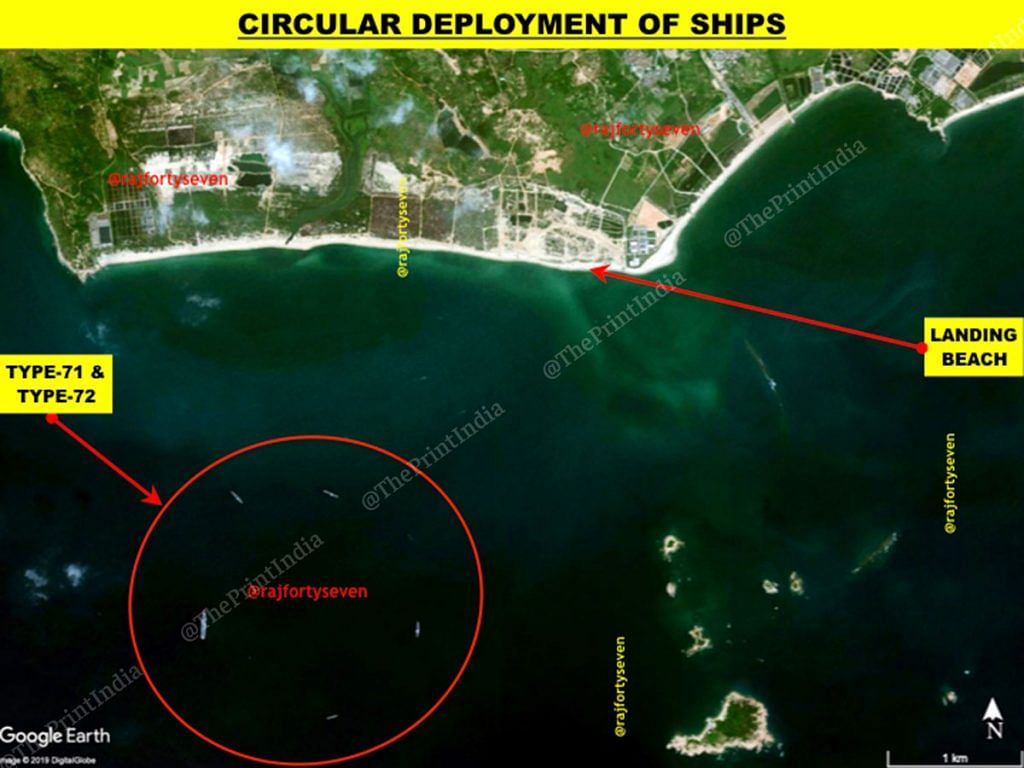
This formation provides safety from shore fire as well as aerial attacks, since most landing ships carry only short-range air defence and close-in weapon systems (CIWS).
Landing
The PLAN landings are preceded by reconnaissance, aviation efforts and fire from moving boats.
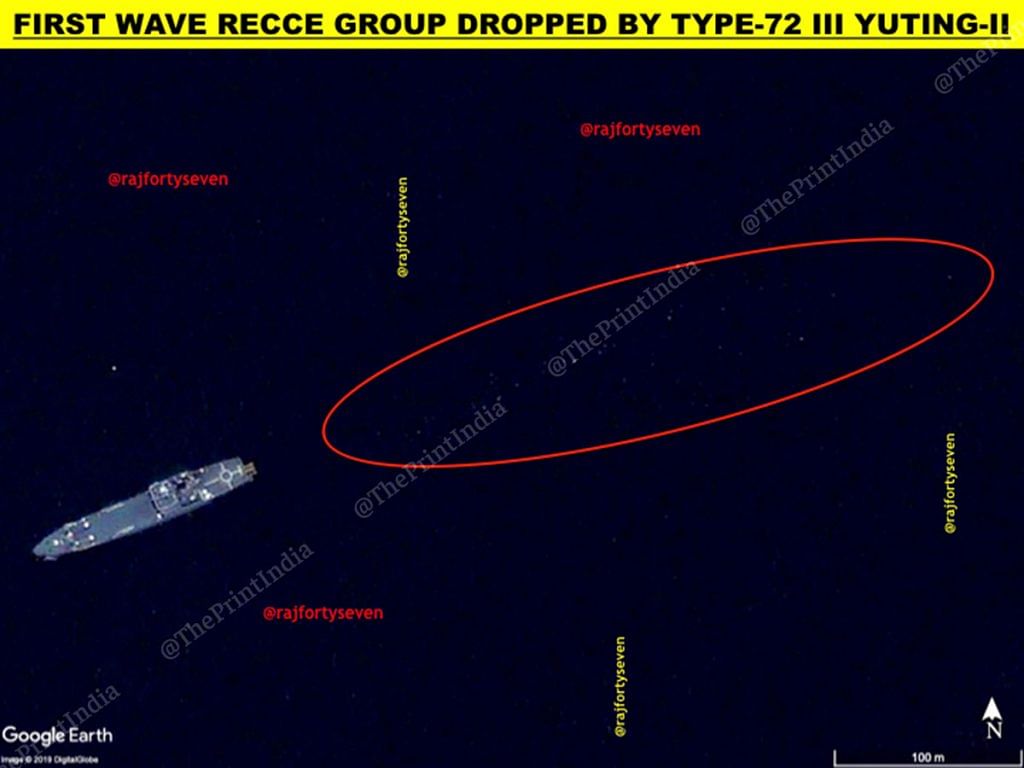
The amphibious exercises ensure landing force movement from ship to shore is carried out in the least vulnerable manner, and mechanised formations reach the planned landing spots in the best condition, ready for action.
The PLAN aerial recce is carried out by four Z-8 Super Frelon helicopters on board the Type-71 LPD, and the first touch-downs by the Type-726 Yuyi class LCAC (landing craft air cushion).
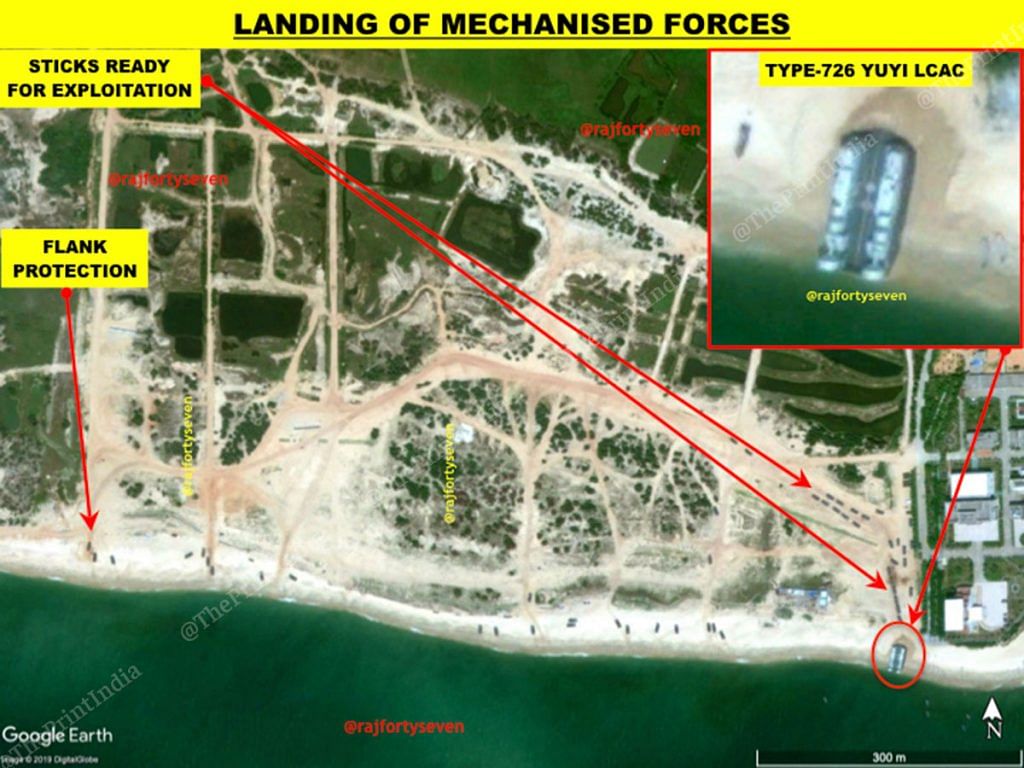
The PLAN’s recent modernisation suggests that Zubr class LCACs would be used in future naval amphibious drills.
The first wave carries Type-08 amphibious armoured vehicles and/or ZBD-05 amphibious fighting vehicles. They are sometimes supported by Type-99 main battle tanks.
Re-embarkation
The Chinese navy also practices re-embarkation after the landing exercise and regrouping for developing the best amphibious tactics.
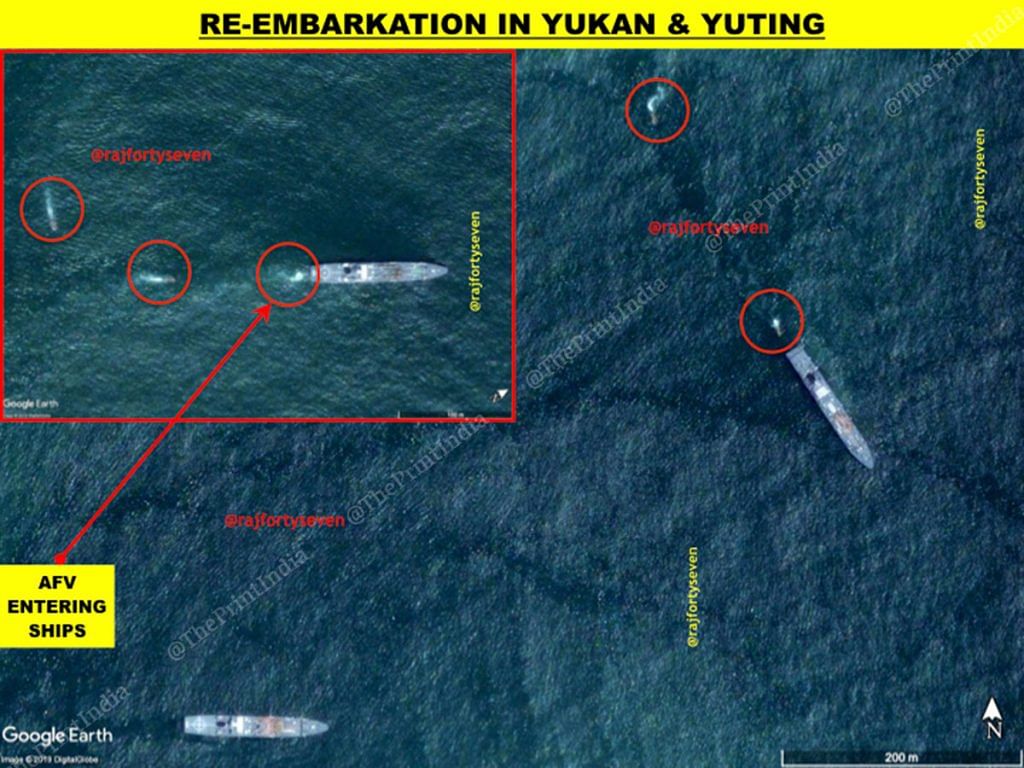
The re-embarkation is rarely caught on satellite imagery. This exclusive satellite image displays the process of re-embarkation with five amphibious fighting vehicles lined up in queue for loading on Type-72 Yukan and Yuting class vessels.
These fleet landing exercises (FLEX) permit coordination between boat group and landing group, and ensure proper break out from the beach head.
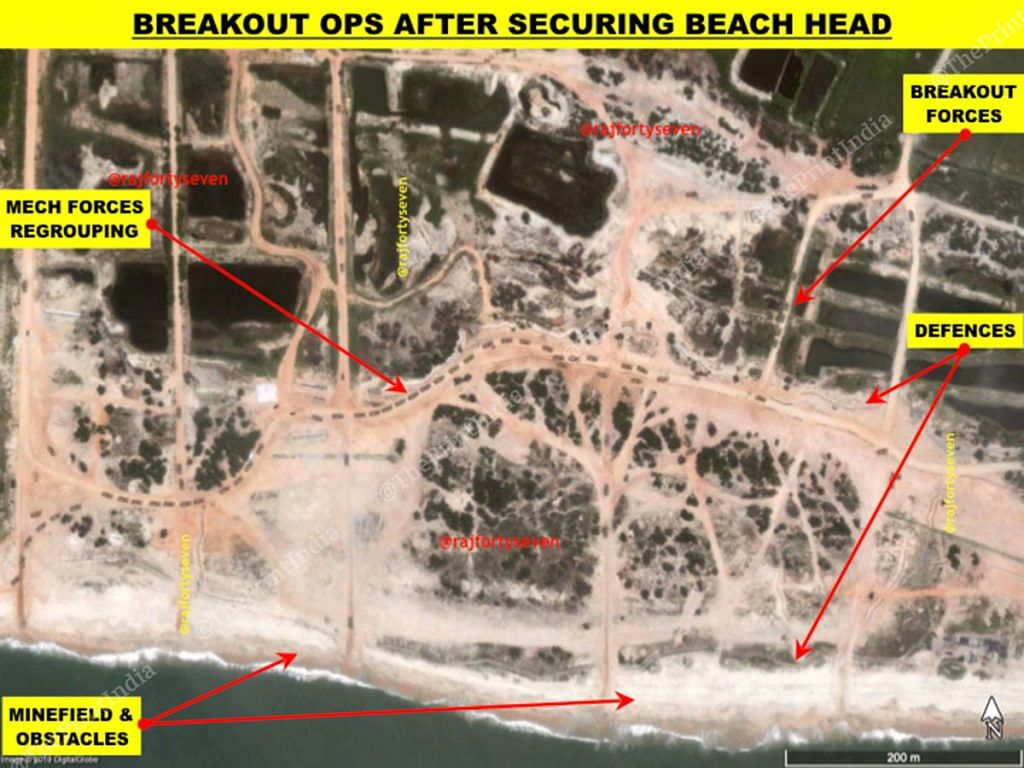
How it can be countered
Taiwan, and for that matter India too, needs to adopt an asymmetric defence strategy against such aggressive manoeuvres on its shores. This can be achieved by investing in better corvettes and high-speed mine layers.
Also read: This bomber, a mainstay of the Chinese air force, is now being deployed against India


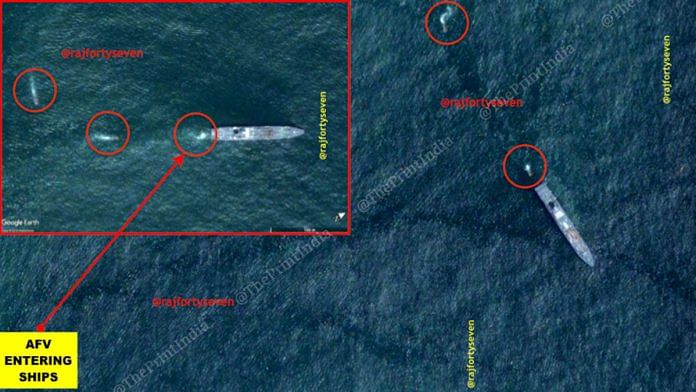

Chinese rehearsal for the invasion of Taiwan supports my decades long conviction and plans on the need for asymmetric Naval Warfare preparation to counter the Chinese and other behemoths: